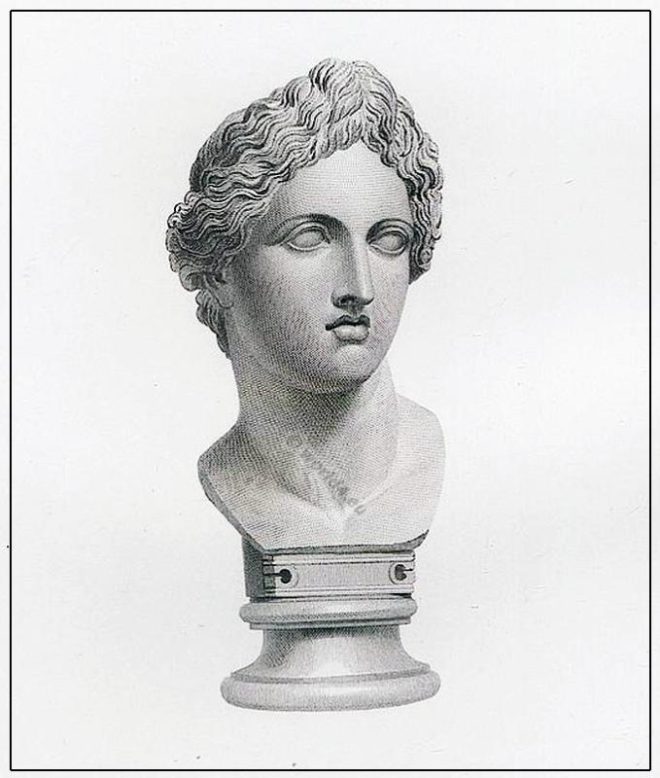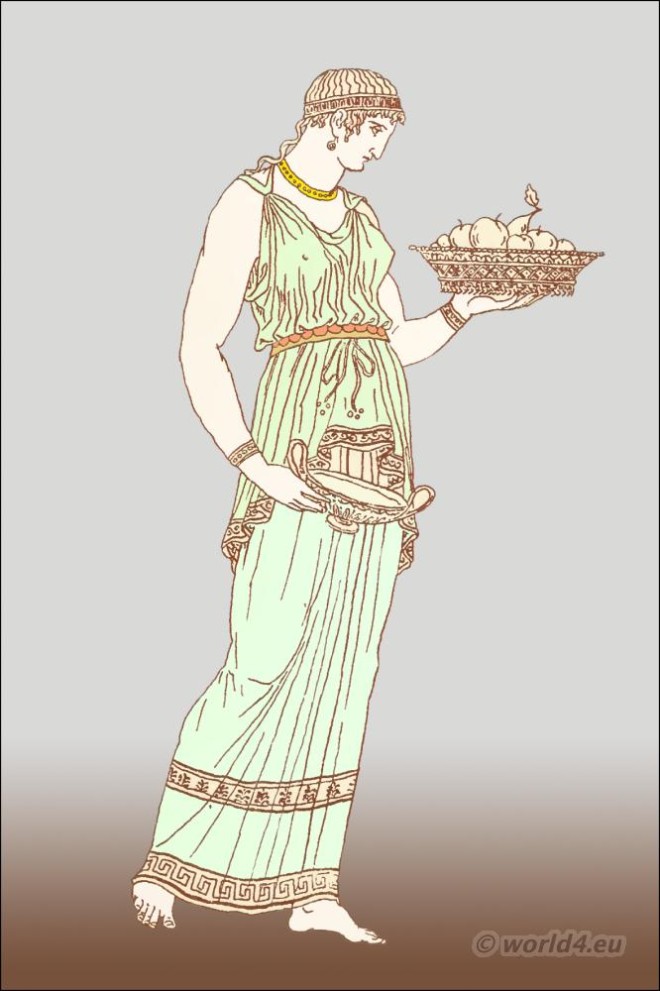The scholars and writers on antiquities, up to the time of Winckelmann, apply the term Fauns to the human figures with tails and pointed ears, while they term the figures with goat’s legs sometimes Pans, at other times Satyrs.
Tag: Clothing in ancient Greece
Clothing in ancient Greece was generally very simple in character, often consisting of a single rectangle of fabric, not sewn, but wrapped around the body, with almost identical styles in both men’s and women’s clothing.
Asiatic Female with head-dress Cidaris. Persian Phoenician origin.
This bust has been explained as that of Adonis. The head-dress is essentially of Eastern origin, and the cap is analogous to that which is considered peculiar to the Phrygian and Persian races.
Bust of Apollo of great beauty, crowned with a narrow diadem.
The distinguishing characteristic of the head of Apollo is the manner in which the hair is represented.
Pallas Athena wearing aegis with Gorgon
Pallas Athena wearing aegis with Gorgon’s head as a breastplate.
Pallas Athena with peplos or himation.
Statue of Pallas Athena with peplos or himation partly girt round the waist.
Greek Statue of Pallas Athena wearing the peplos and diploidion.
Pallas Athene. The peplos and diploidion, and the Gorgoned aegis extended as a covering to the arm that holds the shield.
Pallas Athene (Minerva) wearing the aegis with the Gorgon’s head.
Pallas Athene (Minerva) wearing the aegis with the Gorgon’s head on her breast; she wears the himation as a diplax.
Statue of Athene with the skin of the goat Amalthea.
Statue of Athene; wears as under-garment the chiton, next the peplos, with the wars of the giants and the skin of the goat Amalthea.
Ancient Greek Female dancer with himation only.
Female dancer with himation only, called, when thus worn, Achiton, i.e. without chiton.
Women with clasp-fastened chiton.
Greece classical period. Greek female dress of antiquity.










